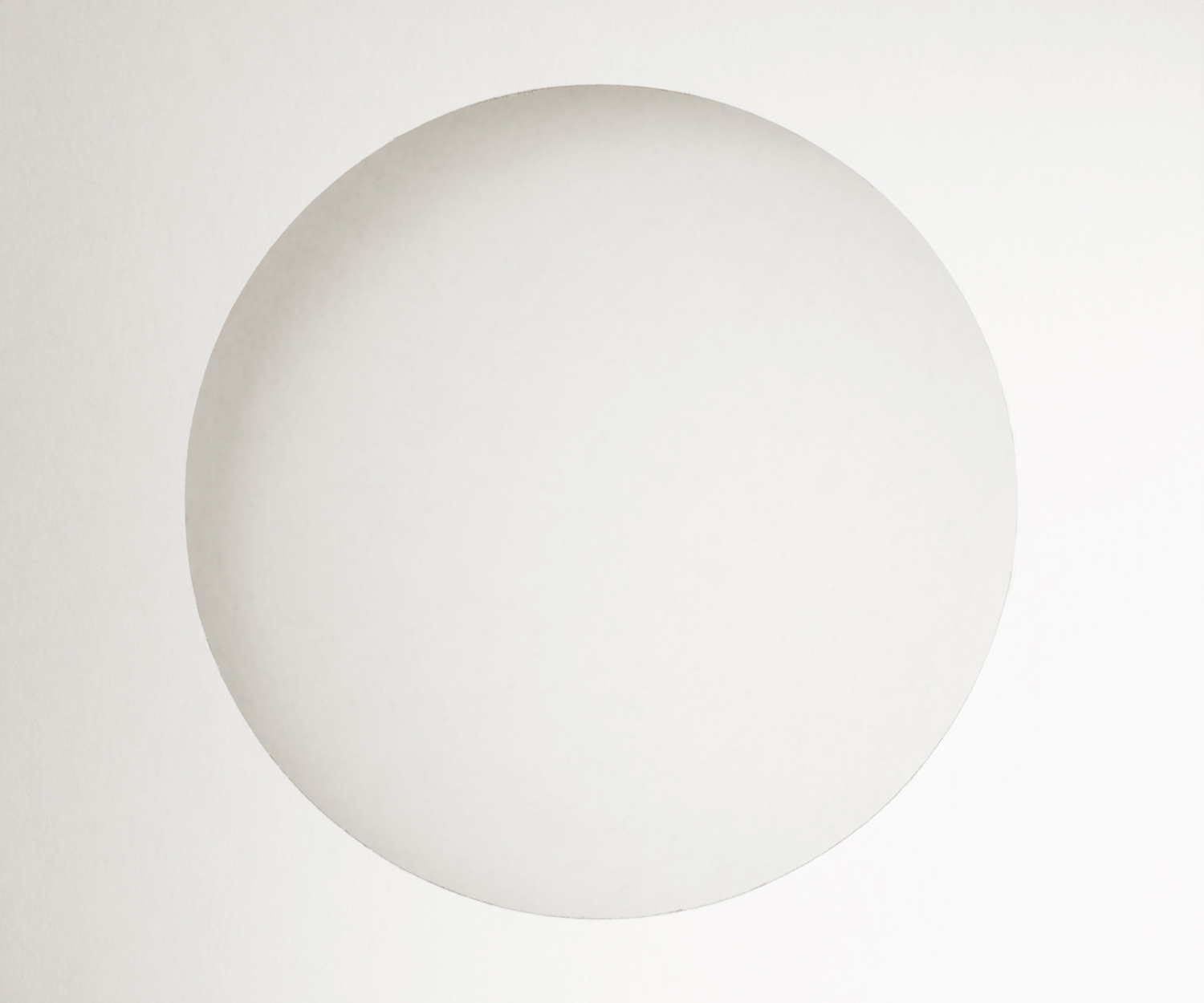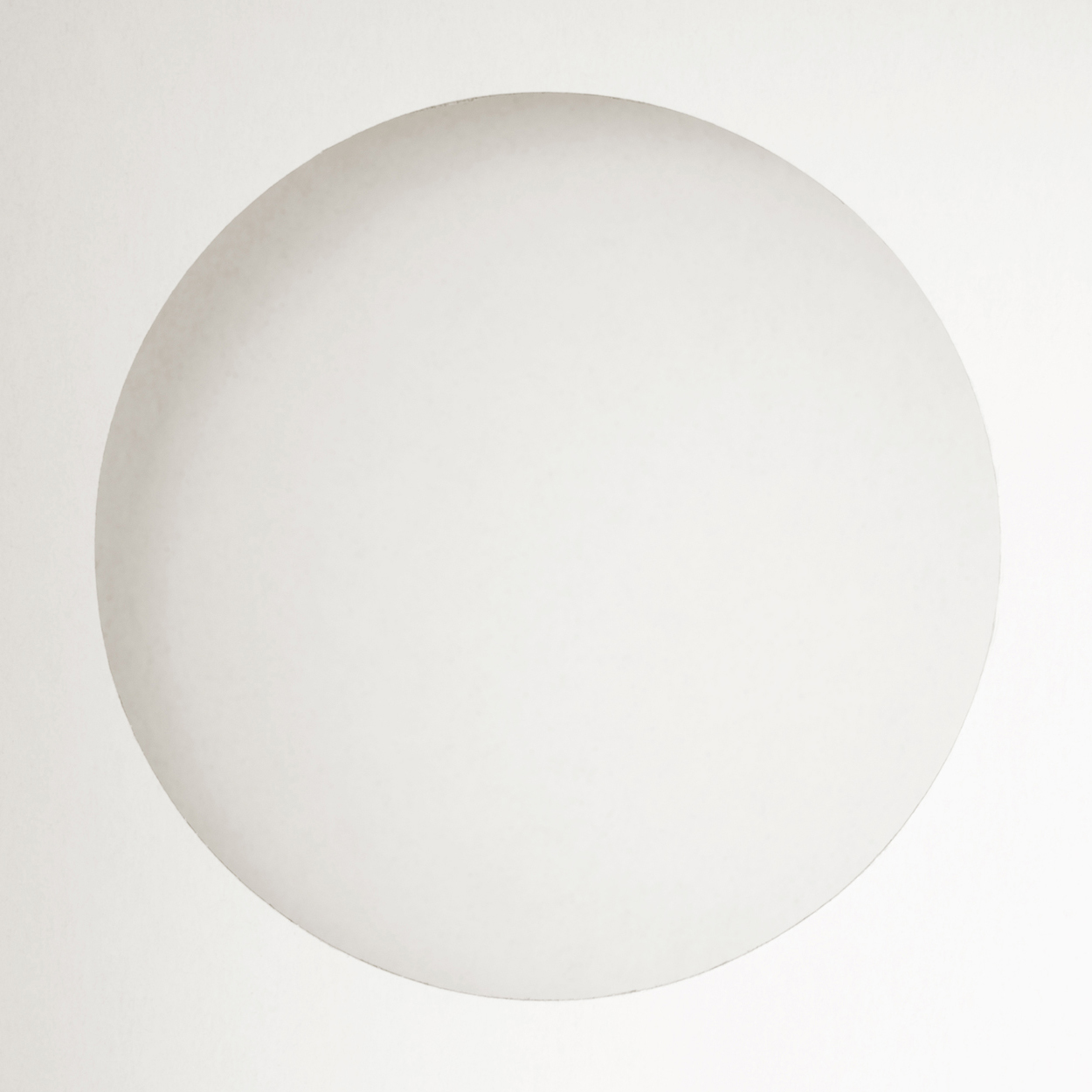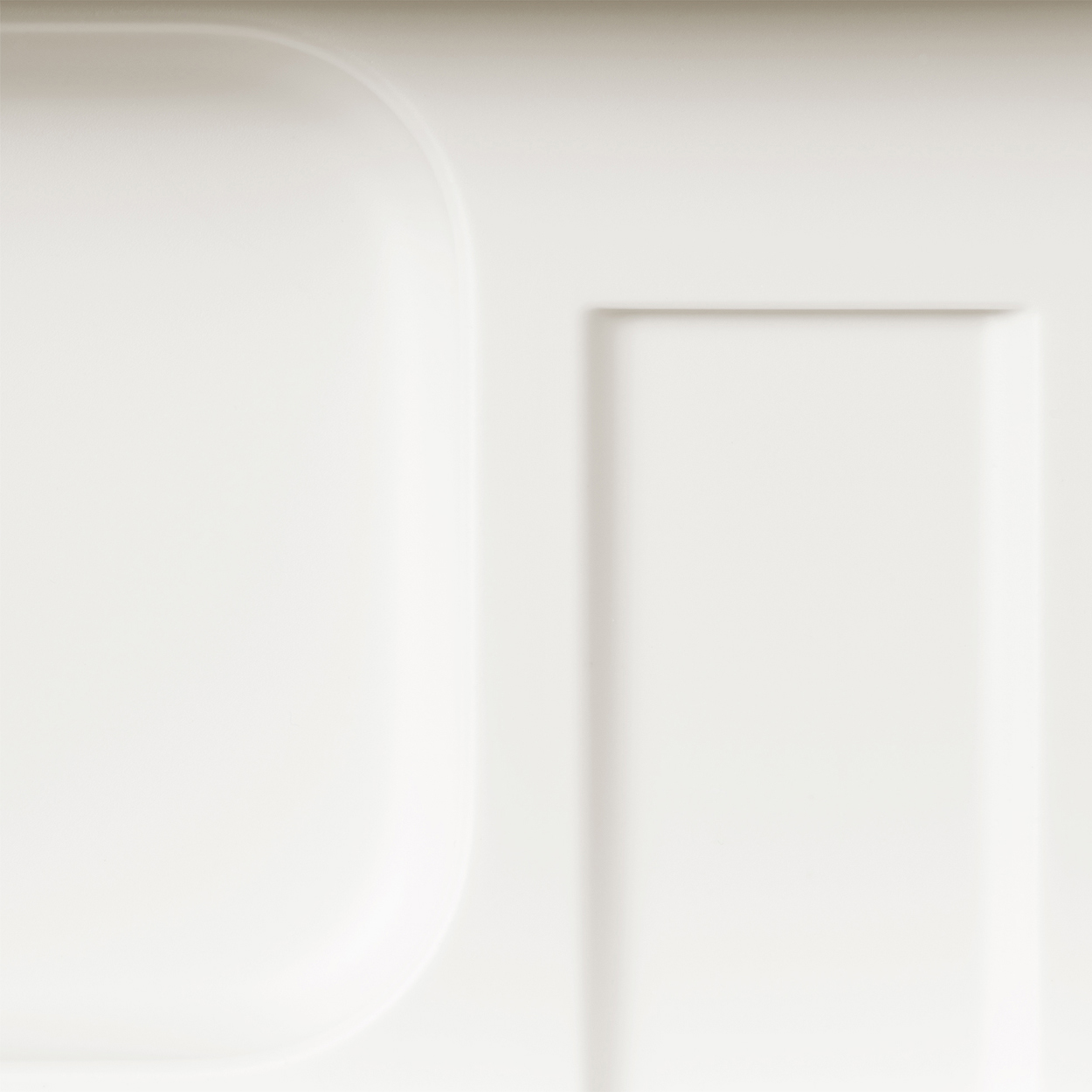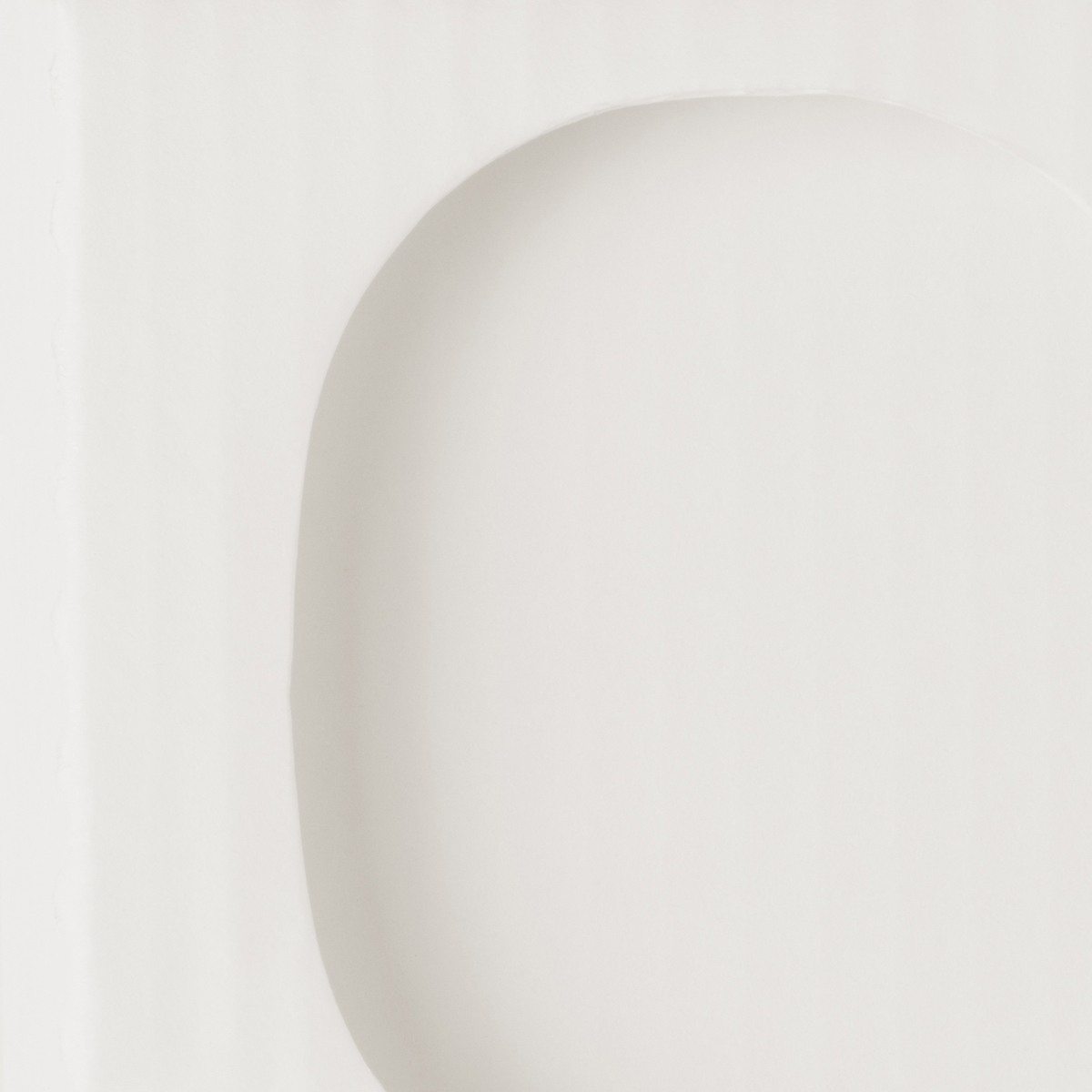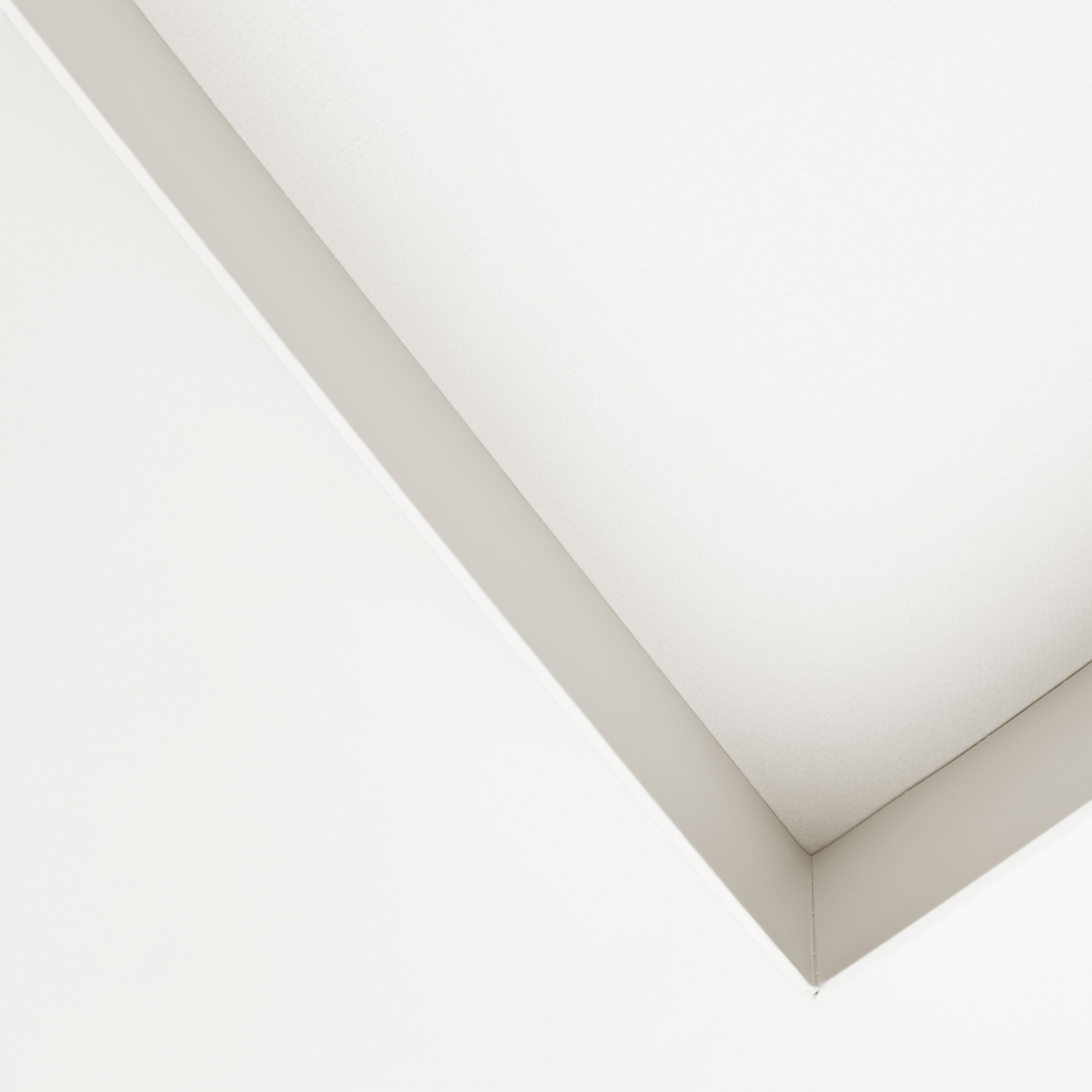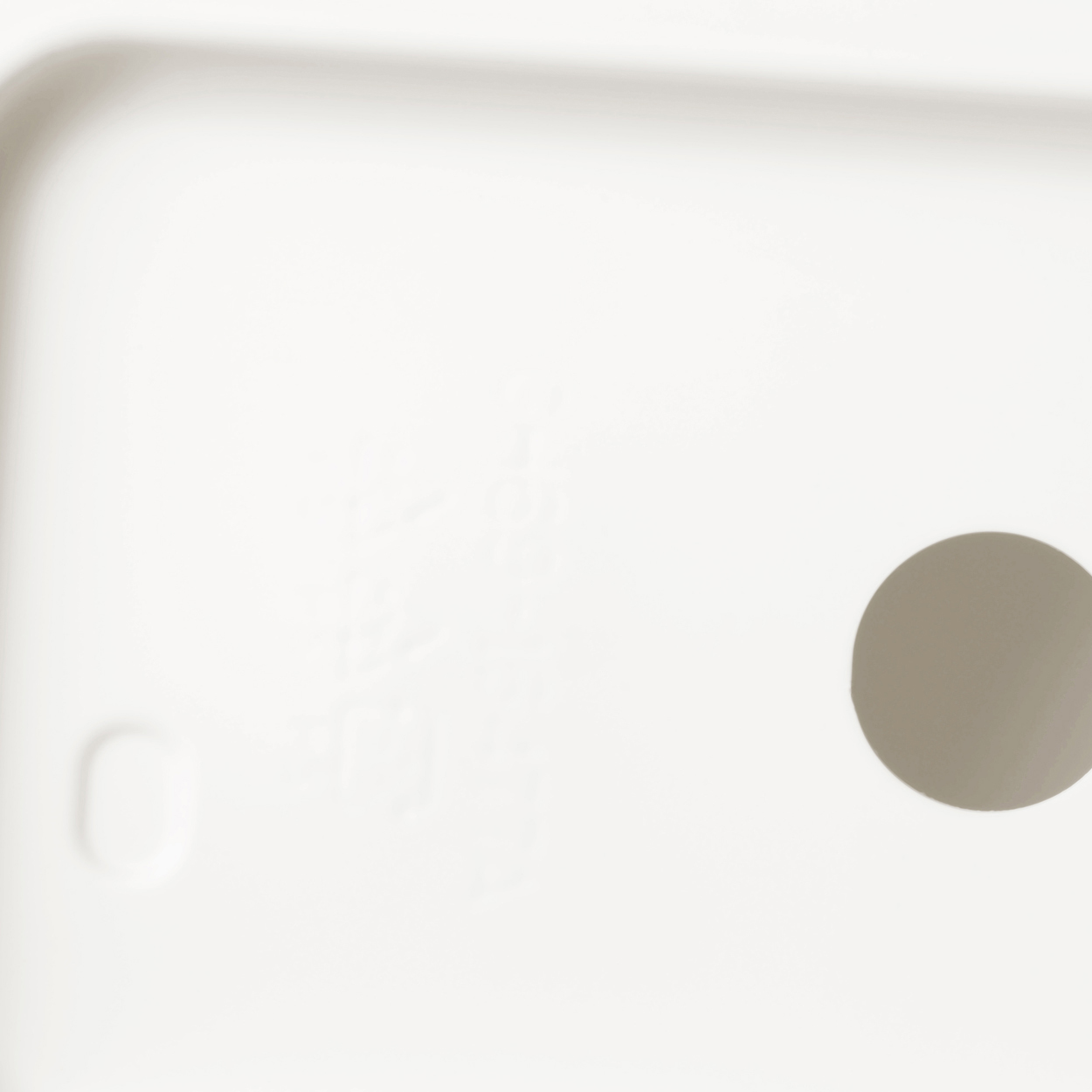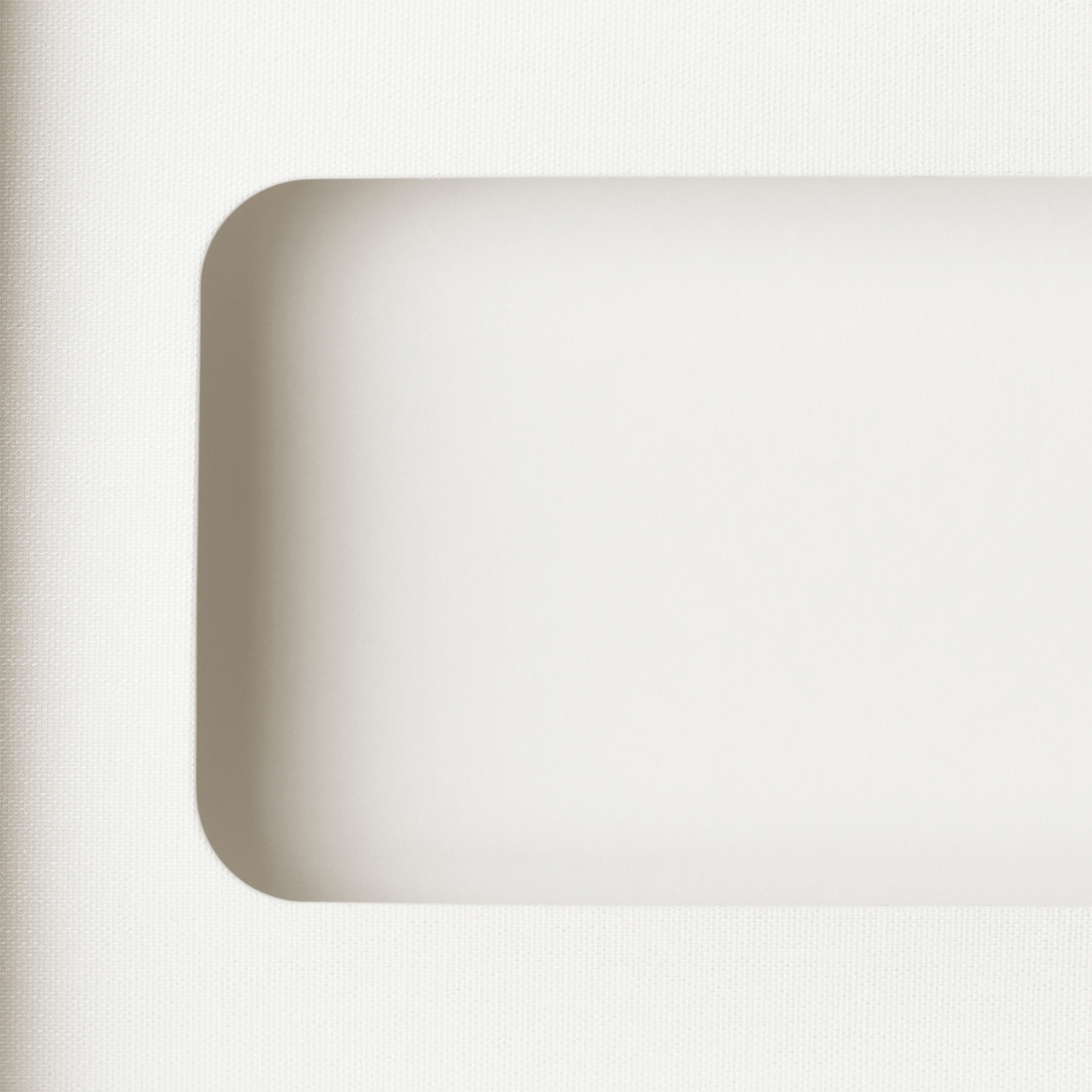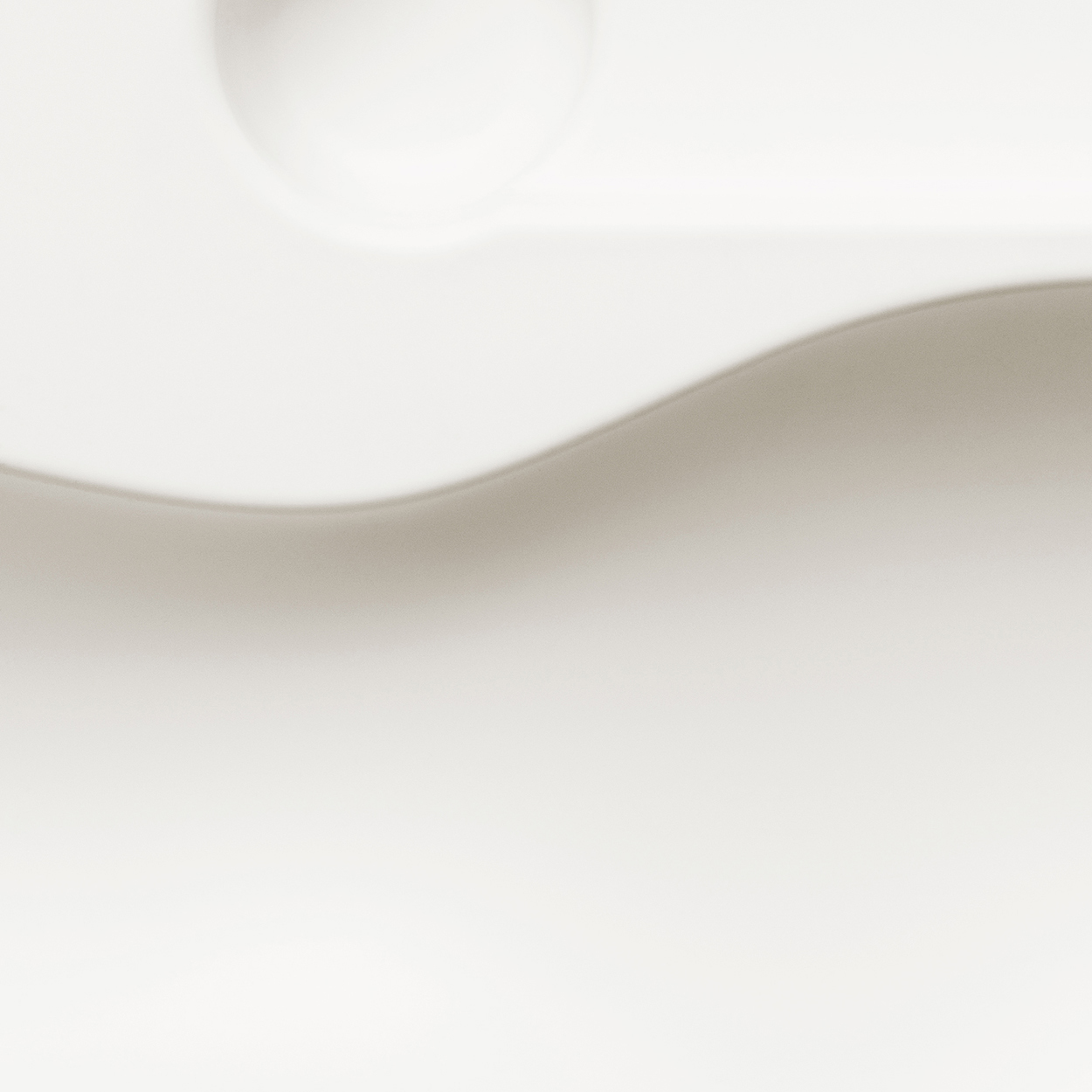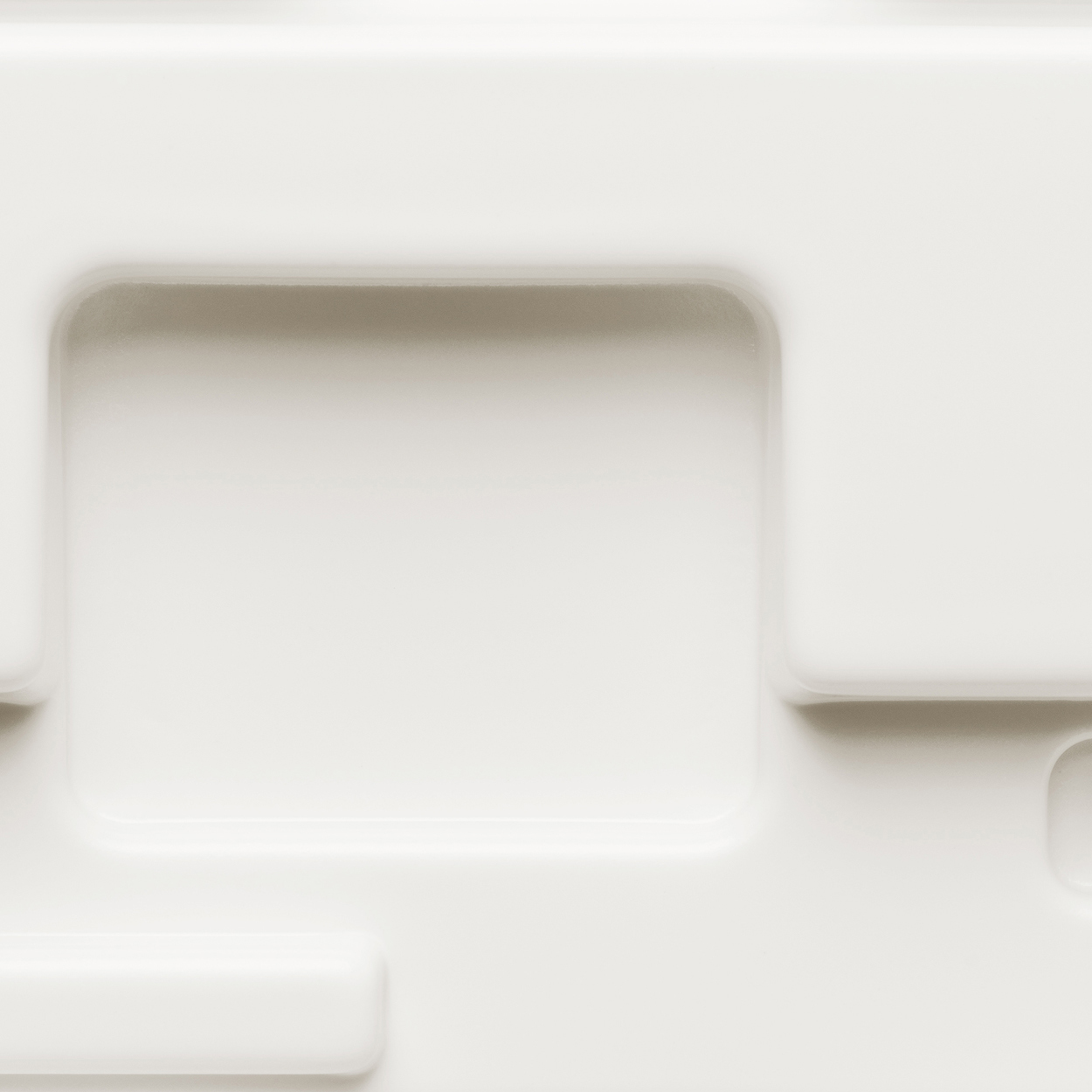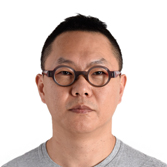
Birth
1973, Gwangju
Genre
Installation, Photography
Homepage
KDK (Dokyun Kim), from A to W
Titles that appear to be random sampling of numbers, images that seem unreal because they are real
sf.sel-12, w.dk-1, a.P-4, f.Ws-1
The titles of KDK’s artworks are composed of letters and numbers – they all seem familiar yet at the same time unfamiliar. No matter how much one analyzes the photographs, it is difficult to find clues that explain this combination of letters and numbers. Perhaps that is the reason why, when first looking at KDK’s work, the viewer has the sensation of being caught completely off-guard, attempting to connect the photograph of a sophisticated urban setting and the title of the work. This title that seems to be a random sampling of numbers and letters, combined with the obsessively-focused cropping of the subject, proves to be an apt strategy on the artist’s part to make his work dramatic, contradictory images that are filled with an unrealistic and surrealistic ambience. The artist successfully perplexes the viewer, with this paradoxical and strange atmosphere, and the unknown narratives of A, F, SF, and W remain a mystery.
The A, F, SF, W narrative
When asked about the significance of the titles, the artist simply answered in haste:
A is for Artificial and for Abend (night)
F is for Façade and Farbe (colour)
SF is for Science Fiction and for Space Faction
W is for Wall and Winkel (angle) and White
Reflecting on his answers, the narrative for each series is as follows:
A. In the absence of the sun (Abend), artificial light enters and starkly minimal buildings emerge in brand new attire. Receiving this artificial light, the building is set in a bold composition to be captured by the camera. This photograph turns something that exists into something totally unrealistic.
F. The world is filled with light. The artist’s gaze stops at the building’s façade. A feast of vibrant hues is fashioned by coloured glass under the dazzling sunlight. The façade – made of glass or mirror-like materials, such as the bright and lively coloured glass that burns into the small frame – bears resemblance to Mondrian’s colour compositions.
SF. The sun is gone again. The buildings now appear in the night with a new, different face. However, that face is not the same face that is illuminated from the exterior as seen in the A series. Instead, the building emits its own light in the darkness. It is as if in the hour that people disappear, the building is waking up to slowly become active. There is a woven lattice pattern that seems endless, and combined with the artificial light, the pattern emphasizes and enhances the impression that this is an unrealistic space. This unfamiliar yet seemingly familiar scene reminds me of a Sci-Fi movie that I might have seen before. Nevertheless, the minute I seem to comprehend this SF series, KDK also refers to the space created by this fictitious narrative, Space Faction.
From A to SF
There are a number of characteristics that are consistent in KDK’s work from series A to series SF, which focus on the artificiality of ordinary buildings. In general, most of the subjects Kim chooses are buildings. Specifically, they are buildings constructed in steel, stiff and upright, with a façade made of mirror or glass. They are perfectly minimal structures. The buildings KDK chooses are unadorned and without superfluous elements, evidence of the axiom that perfection does not mean there is nothing to add but rather, there is nothing to remove. So what attracted KDK to these minimalist buildings in the unfamiliar land called Germany? It was probably the box shaped structures that made such a deep impression on the artist who was more familiar with the curvilinear cityscapes of Korea.
Because KDK studied photography at the Kunstakademie Düsseldorf, his work is often viewed as being influenced by the school of German photography, Neue Sachlichkeit (New Objectivity)*. Of course, his camera focuses on the subject candidly and reveals the subject’s shapely beauty, which would imply that Die Neue Sachlichkeit is an influence for KDK. But if the viewer pays closer attention to the subtleties, then it becomes clear that there are elements that make his work difficult to be classified as such: the metallic feeling captured in these images is different to that of an image that is captured instantaneously on the camera.
One night, the artist drives along the autobahn, and amid the passing scenery he catches a glimpse of a building emitting an ‘extraordinary light’. As if drawn by an unknown force, he stops in front of the building. Just like the White Rabbit in Alice in Wonderland, this building emanating light pulls Kim into a fantasy. He still exists in reality yet the building he confronts seems as if it is outside of real time and space – as if the artist were invited into a scene in a Sci-Fi movie. From this viewpoint, however, this SF series does not appear to be very distinct from the previous A or F series. That is to say, buildings are still the subject in the works and in particular, the artist still actively uses formative elements of the building’s interior such as lines and planes in the composition. However, the decisive difference is the space that the artist observes and the artist’s extremely subjective analysis of the building. In his notes, he states the following:
“I choose a building that ignites my creativity and then I compose the photo by capturing the most spectacular and surrealistic text. Thus, my chosen subjects such as the outer wall of a Gothic church, the wall of a minimalist modern building, coloured glass, repeated floor and lattice patterns, are readings of the characteristics of a building that are reborn as imaginary coloured surfaces in images. My works produced in this method are not architectural photographs per se, as the aim is not capturing the aesthetic qualities inherent in a building. Rather, it is my desire that my chosen subject and the audience is able to reflect on the representation of my being and self, creating a complex body of visual, corporal, physical and psychological reactions.”
Extract from the artist’s notes
The SF series piques our interest in the sense that it evokes an ambience similar to one in a well-made Sci-Fi movie, but this ambience is actually drawn from an existing site. As time passes, the bizarre and heterogeneous atmosphere of this space and the way the photographs trigger memories of a fantastical or unrealistic sensation everyone has experienced at least once in life, when reality felt completely unrealistic for a moment, indicate that the artist’s aims were successfully achieved.
Once more, but with modification NEW SF
“Space of the future might be occupied in black and white. There might not be enough sunlight and the earth’s surface may be so fully saturated that we will have to migrate underground or to another site.”
- Art in Culture (Korea), December 2008, p. 125
KDK’s recent series NEW SF is an extension of the SF series, yet the new works suggest changes in the artist’s manner of looking at a space or a building, as well as changes in the artist’s worldview. These works are marked by bold omission of parts or partial enlargements of a section of a building, while the portrayal of repeated basic formative elements such as lines and planes previously seen in the SF series, has been drastically reduced and simplified. Artificial light – considered Kim’s trademark – is nowhere to be seen.
As one assumes from his statement, photos in the NEW SF series are dominated by monotonous black and white (of course there are exceptions such as sf.Sel-10). The black that acts as the foundation in the images is no longer flat – it has now gained depth. In sf.Sel-12 the black extends the viewer’s gaze (and perhaps even the viewer’s emotion) beyond the photo surface into a deep abyss. Perhaps that is why the space created by artificial light in series A or SF seems to be more associated with dystopia. Could it be that the neglected problems – daily news filled with stories of war and terror, pollution and famine – has made the artist come face to face with reality? It is not easy to find the stylized qualities evident in KDK’s earlier work. Yet the reasons for a stronger connection to this conspicuously simplified and relaxed work is most likely due to the artist’s heightened sincerity; the resulting work has perhaps more effectively captured the artist’s sensibility of the world.
A defining characteristic that distinguishes this series from KDK’s previous work is the introduction of the formative ‘circle’ element that now takes up a central position in the photographs. Images such as sf.Tko-6, sf.Sel-10 and sf.Sel-11 are examples of such compositions. In photos sf.Tko-6 and sf.Sel-10 one notices a continuous rhythm through the repetition of the basic elements also seen in earlier works. Especially with sf.Sel-10, the repetitive arrangement of red donut-shaped circles against a black background is worth noting, and this image seems to reference the introduction of the classic Sci-Fi movie Star Wars. Sf.Tko-6 has captured a boldly cropped black and white wall, dotted irregularly with large and small holes and the resulting image is reminiscent of a constellation of stars rather than a building. The highlight of this series is sf.Sel-11: this image focuses on the Rotunda of the Leeum Gallery, a building designed by Mario Botta. The Rotunda is considered to be the signature design element of the gallery and Kim reinterpreted this area by visually compressing the stairway leading from the ground level to the Rotunda. The circular shape at the centre of the image evokes a gateway for launching a spaceship into space.
Instead of photographing the entire building, KDK’s work evokes a fantasy-like sensation by zooming in on a particular section of the structure or boldly cropping the image; this technique was already evident in the SF series, but is used even more extensively in NEW SF. Therefore without any knowledge of KDKs previous work, the fact that the photographs portray buildings becomes completely abstracted. However, KDK has not intended these photographs to be realistic depictions of buildings, nor for the viewer to be able to recognize the subject matter of the works. These images invite the viewer to wander freely through the artist’s imagination, and to explore one’s own imaginative response to the world Kim creates.
Gaze toward the interior, inside of the buildings, W
In the photographs in the new series W, it is even more difficult to discern the subject matter. For the first time KDK has photographed the inside of a building; previously, he worked extensively in creating images of the exterior of buildings. Additionally bright lights and ornaments cannot be found in this series. The only visible elements are a few lines and corners formed by the intersection of those lines.
KDK woke up one morning and experienced bizarre confusion as to whether the wall had a corner that was protruding out or sunken in. This provided a starting point for the simple yet fascinating work within the W series. The basic principle – two dots joined together form a line, and the meeting point of lines form a plane – is the basic foundation for the re-composition of these lines by the artist. Shadows between lines add a three-dimensional effect. When these images are observed from a distance, that three-dimensional effect creates an optical illusion, forming a caved-in corner and then in an instant, the same corner morphs into a protruding cube. At first glance the W series appears to be quite distinct from KDK’s earlier oeuvre. Familiar elements such as buildings, construction elements and artificial lights are all removed, and these photographs bear a closer resemblance to pencil drawings. However, KDK’s key theme and method remain the same. Even though his chosen subjects are simple corners that barely attract attention, KDK again takes an existing space and imbues it with an unrealistic atmosphere by capturing it on his camera. The transfigured space is once again ambiguous and obscure, its source unidentifiable. If the side of a brick wall in w.tagm-1 and the wallpaper and the ceiling fan in w.urh-3.1 are removed, it is relatively challenging to figure out that these photographs are indeed photos of walls. Ultimately, through his visual illusions and playful manipulations of shadows and black and white – as in works such as w.bh-2.1 or w.bh-5.1 – KDK returns again to his ongoing exploration of fictional spaces created through a reconfiguration of the real.
Lastly, KDK
In 2001, a young man from South Korea left for Germany. Driving through Germany he was struck by the difference between the German and Korean landscapes. In Korea, the scenery was filled with hilltops and mountains. While cities around the world have similar skyscrapers piercing the skyline, as he travelled into the outskirts of German cities, he discovered something entirely new to him. Maybe it was the endless horizon that affected the artist. Straight lines began to appear in his photographs; upright buildings. Though he captured building through his camera, the lens refused to ‘record’ these building as they are normally seen. Using artificial light and dramatic compositions, the future as the artist imagined it gradually entered his photographs overtaking the pre-existing buildings: they became spaces of brilliant spectacle. This young man who studied in Germany went on to travel the world as a photographer. And during this time, he met many people, saw new things, and his photographs also began to evolve. He began to leave more room for imagination and his works began to become more sincere. Viewers occasionally believe that KDK simply positions his camera in front of attractive buildings, but in the final moment before the shutter is released countless changes take place. In the end, what KDK photographs is no longer the realities that appear before his eyes, but the spaces felt by the body and the fantasy worlds that unfold in parallel with reality.
* New Objectivity was an art movement that arose in 1920. Photographs from this movement are characterized by the portrayal of the subject in a form of extreme realism. On the surface, KDK’s photographs appear to display similar characteristics, but his work is distinguished by a reconstruction of the subject with the artist’s own subjective expression rather than a realistic portrayal of the chosen subject. However, although KDK’s work is not a deviation of or a progression of the Bechers, it is impossible to ignore or deny the influence of the Kunstakademie Düsseldorf and its legacy.
Nathalie Boseul SHIN (Curator of Total Museum)
Light and Shadow Filling an Empty Space
Artist KDK has consistently created constructive work revealing structure through an object’s outward appearance. This tendency of his work has been gradually changing. He has once again broadened the spectrum of his work by going beyond the space between reality and unreality through a building’s interior and an edge where a plane meets another plane. His titles are another hallmark of his work. The single English letters he uses for his work’s titles are associated with the images his works depict. The letters are abbreviations for words we can only infer by viewing the work. They could correspond to places where his works are shot, building names, or words representing some feeling or atmosphere. KDK uses code-like titles because he doesn’t want the meaning of his work to be fixed. With these suggestively subdued titles his works can have multiple meanings and can be interpreted by viewers irrespective of his intention. That is to say, his works are open to extensive interpretations. With such titles, the artist seems to present works viewers can communicate with rather than trying to forcibly convey a specific message. As such, he showcases the subjects of his photography by excluding his subjective emotions and maintaining objectivity as much as possible. He takes the subject matter of his work from what humans have made. He would like to shape his own photographic idioms, trying to depend on an objective perspective rather than grasping at some object with his individual sensibilities. Recent photographic work in the art scene tends to heavily rely on digitally retouching or modifying images. He also uses this process. However, he only adopts this post-photographic process to highlight the objects rather than excessively altering the original images. He concentrates on revealing the true colors, forms, and structures of the subjects of his photographs as they are. His works that abound in color derive from this attitude. In addition, his recent pieces have a warm soft surface rather than emitting a cold gloomy atmosphere. Likewise, KDK’s work is characterized by unrestricted images and meanings open to diverse interpretations.
So, from now on, we review his works on display at this exhibition in consideration of this basic tendency of his art. The title of the series is 'p'. As the titles of his previous pieces had multiple meanings, 'p' may refer to various words such as ¡°package,¡± the subject matter of this series, ¡°Perigee,¡± the gallery it is exhibited in, or ¡°pure.¡± If we relate his pieces to words inferred from their titles, we can discover another interesting point in his work. We will first examine the subject matter he adopts for his pieces. Everything we have made entails diverse narratives. These narratives are accumulated with time. The surroundings we inhabit are full of artificial things and their narratives. Artificial objects are found everywhere. However, we are normally indifferent to them because we perceive them as part of the environment familiar to us. If we take an interest in such things, we may feel that they are amazing. Of them, artificial structures like buildings are things made using the most of one’s ability. We humans have made such structures after so much trial and error and have improved them through statistics and experiences accumulated with time. In this sense, they are crystals of human knowledge accumulated over a long time. Such structures we pass unintentionally are loaded with vestiges of the people who made them.However, KDK’s previous work was little influenced by such things. He rather tried to exclude those objects, interpreting them from a macroscopic perspective. He recently captures objects from a microscopic perspective. His intention is read in his adoption of frames or something subsidiary used for making or protecting products as the subject matter of his work. In terms of subject matter, the objects he takes notice of are things that play an auxiliary role to protect products or basic frames used for making products. Such things have simple structures but are as solid as the structures of buildings to attain their purpose. They are often unnoticed and remain marginalized or abandoned. Unlike his previous work, KDK brings such objects to the center of our notice. He has nevertheless not completely left his preexisting work behind. A link is found in his concern for architectural structures, the principal subject matter of his previous work and work of constructive reinterpretations.
Next, we can examine the manner of his expression. In his previous series, 'a', 'f', and 'sf' he unveiled a visually and structurally solid structure through an object’s geometric surface. As he put importance on the immediate sense of visible planes and lines, the series were made up of complicated lines and planes but looked arid and patterned. The surfaces that he chose appeared bright and sumptuous, gloomy and highly contrastive in achromatic color. In his recent series 'w', KDK displays edges shaped by simple planes, disclosing some inner space. This work is sensed synesthetically with its structure and surface bringing about the visual effect of an optical illusion. Unlike 'w', showing his concern for interior space, 'p' is particularly marked by new elements such as dramatic light and shadow. The surfaces of this series are primarily white and empty spaces from which things are omitted and filled with shadows and warm lights. With this, the series naturally emphasizes synesthetic parts in achromatic colors. While taking its subject matter from a structure in which a key item or core is omitted, this series appears more solid and substantial. It also reveals flexibility and depth rather than a perfect high density. It shines vividly even though there is no core. The light and shade naturally disclosed is very important for this effect. In this way the artist unveils structures that are similar but have different looks. While he showcases the beauty of simple form with well-arranged lines and planes, he gives rise to the structure in patterned form as if printing it from various angles.
As reviewed above, the 'p' series introduced after series 'a', 'f', 'sf', 'w', and 'b' can be seen to be work wedding elements in a manner opposite to the work he previously made. This is also revealed in his work titles examined above. In this series, he uses the letter ¡°p¡± to create titles that are the names of protagonists. However, the names are ironically not their real names. They have no specific names. The artist names them one by one and lends new meaning through paradoxical titles, drawing them from the periphery to the center. In this way, KDK sticks to his preexisting style where he demonstrated complicated objects with multiple meanings implicitly by simplifying them. In the 'p' series he emphasizes a solid geometric aspect while creating works with a soft warm surface. He shows the firmness and hardness of ancillary things in his own fashion. As such, he has created new images through a marriage of his previous style with a new inspiration.
As reviewed above, defamiliarization through recurring reversals seems to be the essence of his work. That is, the overarching element of his work is to realize the polar opposite of our view toward some object in photography. Through this work he tries to make something obscure clear, attempting to integrate different styles. The fact that he shot images of solid substance in reality is unchanged. Although what his photographs show are something we probably saw somewhere in reality, they make us feel some weird sense of space. This atmosphere appears as an aspect where opposite things are mixed, a feature of his work through the process of editing in which images are newly filtered by his eyes and head. His work seems mature with his elaborate technique of taking care of details, but in a sense it looks austere as it plainly reveals an object as it is. His images appear alienated and arid but in a respect seem to play in space. When appreciating his works, some viewers may feel visual pleasure and others can contemplate the artificial calmly. His work is static, dynamic, rational and emotional simultaneously. What’s interesting in his work is where he will turn his eyes. That’s why we expect to have the pleasure of meeting some different world while following his eyes.
Seung Oh Shin (Perigee Gallery Director)







